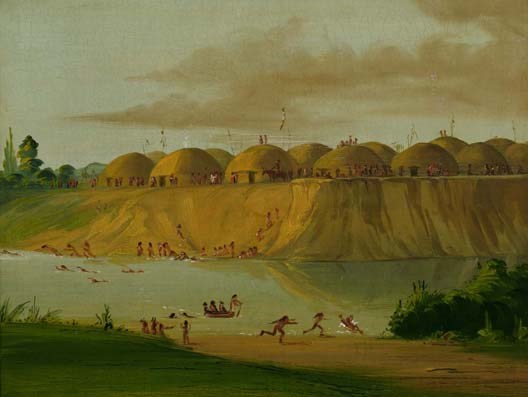
Smithsonian American Art Museum Imagine a busy earthlodge village full of life and excitement: women sit on platforms and sing to their gardens, girls play with homemade leather dolls, boys practice with their first bows and arrows, old men smoke tobacco and laugh at each other's stories. You see faces from across North America and even the world. You hear Hidatsa and Mandan and maybe even Lakota, English, French, or German. You smell corn boiling in a clay pot, sage smoke filling the air, and sweet wildflowers blowing in from the prairie. Or perhaps you hear the howling winds of a winter blizzard. Thick wood smoke stings your eyes and cold air nips at your nose but the thick buffalo robe around your shoulders keeps you warm. Strange visitors enter the earthlodge bringing gifts of tobacco and in return ask for information on the land to the west. In 1974, the United States Congress established a national historic site at a place that was once just like this. Knife River Indian Villages NHS preserves and interprets an area rich with history and culture. Learn more about the people and places that make this park special, or read our brochure for a general overview! |
Last updated: August 18, 2020
